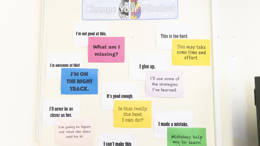How to start a conversation with children and young people about mental health
It can feel difficult to start a conversation with children and young people about mental health.

This may be because you don’t feel equipped with the information you think you may need, or lack confidence about how you even open up the conversation. Adults can also be concerned that they may not have the answers to children and young people’s questions, or that they might say something ‘wrong’.
But the good news is that you are used to working with children and young people, and are able to use language that they can understand. There are also a number of excellent resources available to help.




 Author
Author


 Author
Author
